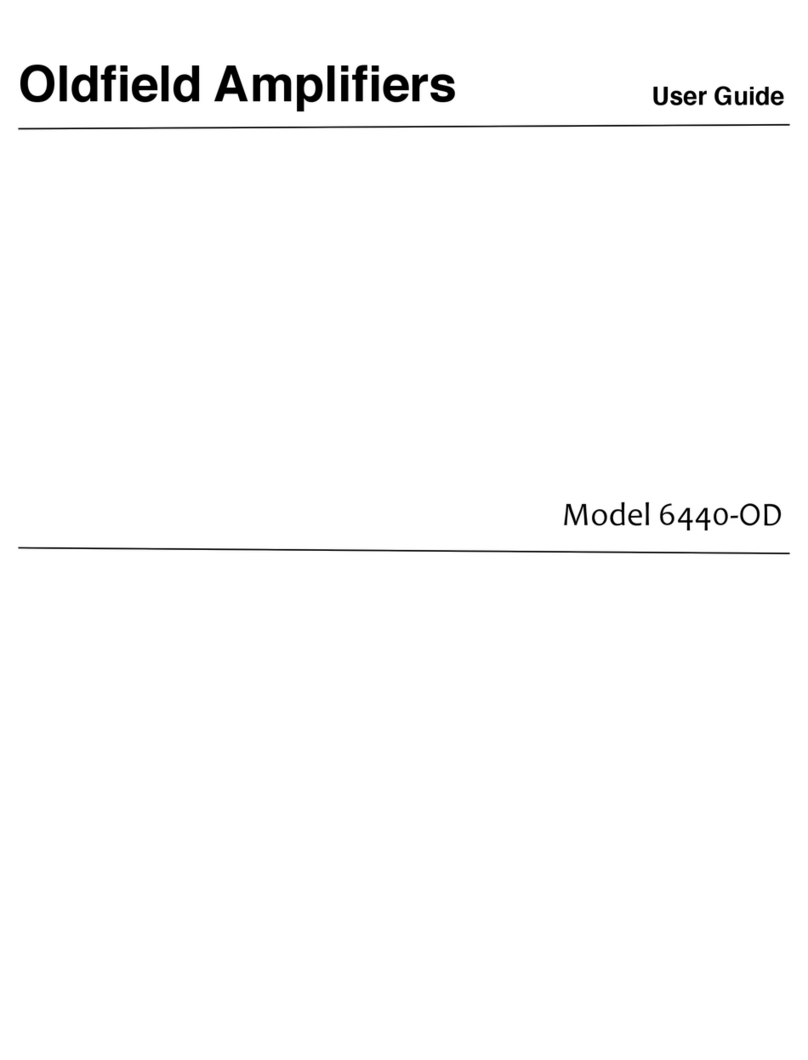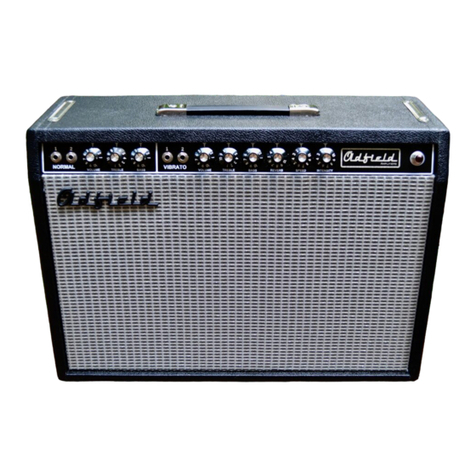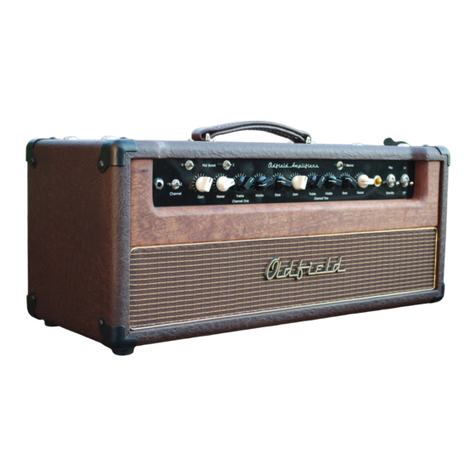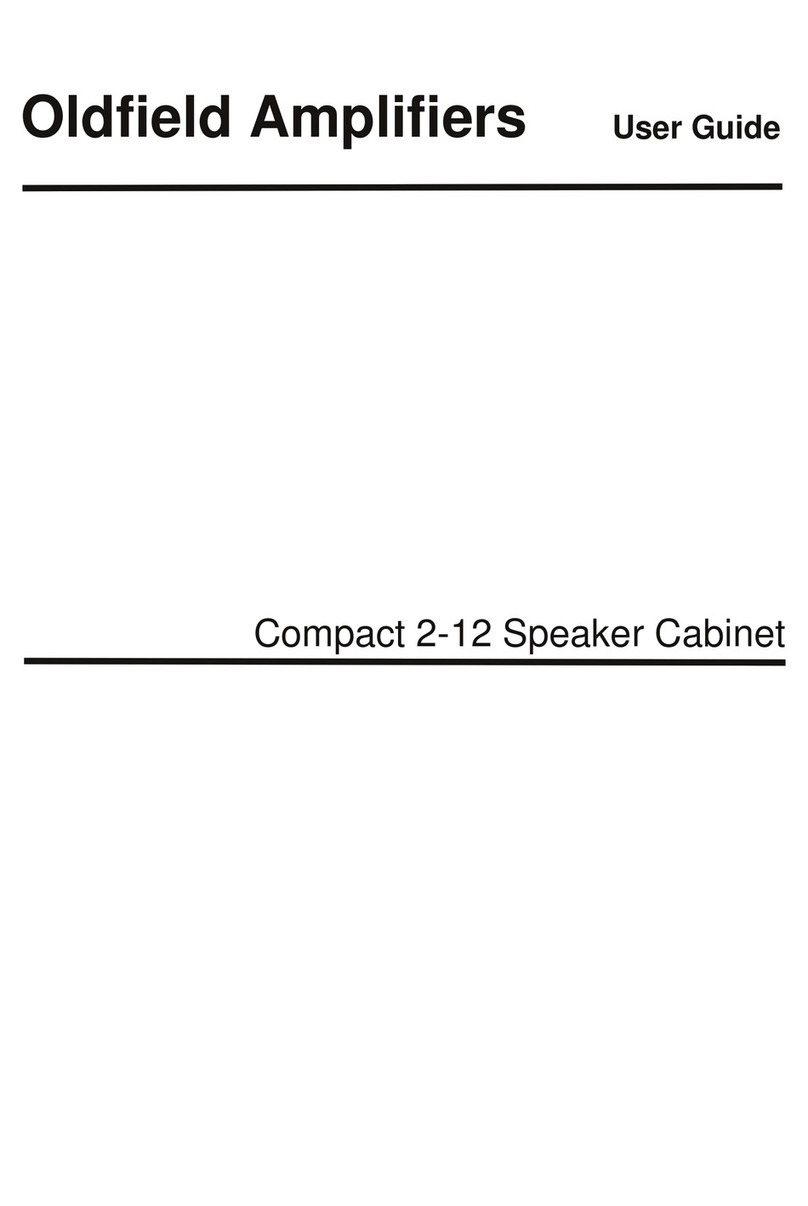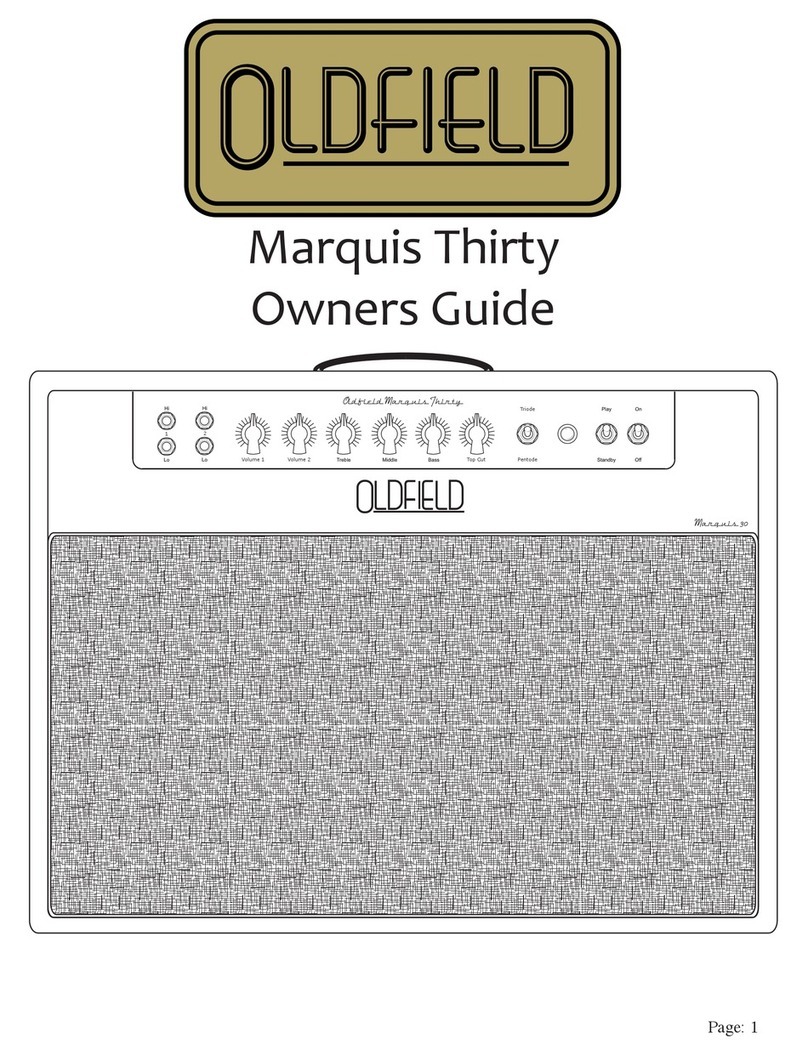•For your safety read, retain, and follow all instructions. Heed all warnings.
•Only connect the power supply cord to an earth-grounded AC receptacle. This
amplifier is designed to operate on standard North American 115V AC and should
only be plugged in to a receptacle meeting those specifications.
•WARNING: To prevent damage, fire or shock hazard, do not expose this unit to
rain or moisture.
•Unplug the power supply cord before cleaning the unit exterior (use a damp cloth
only). Wait until the unit is completely dry before reconnecting it to power.
•Maintain at least 6 inches (15.25 cm) of unobstructed air space behind the unit
to allow for proper ventilation and cooling of the unit.
•This product should be located away from heat sources such as radiators, heat
registers, or other products that produce heat.
•This product may be equipped with a polarized plug (one blade wider than the
other) or a three-prong grounded plug. This is a safety feature. If you are unable
to insert the plug into the outlet, contact an electrician to replace your obsolete
outlet. Do not defeat the safety purpose of this plug.
•Protect the power supply cord from being pinched or abraded.
•This product should only be used with a cart or stand that is recommended
by the manufacturer.
•The power supply cord of this product should be unplugged from the outlet when
left unused for a long period of time, or during electrical storms.
•This product should be serviced by qualified service personnel when: the power
supply cord or the plug has been damaged; or objects have fallen, or liquid has
been spilled onto the product; or the product has been exposed to rain; or the
product does not appear to operate normally or exhibits a marked change in
performance; or the product has been dropped, or the enclosure damaged.
•Do not drip or splash liquids, nor place liquid filled containers on the unit.
